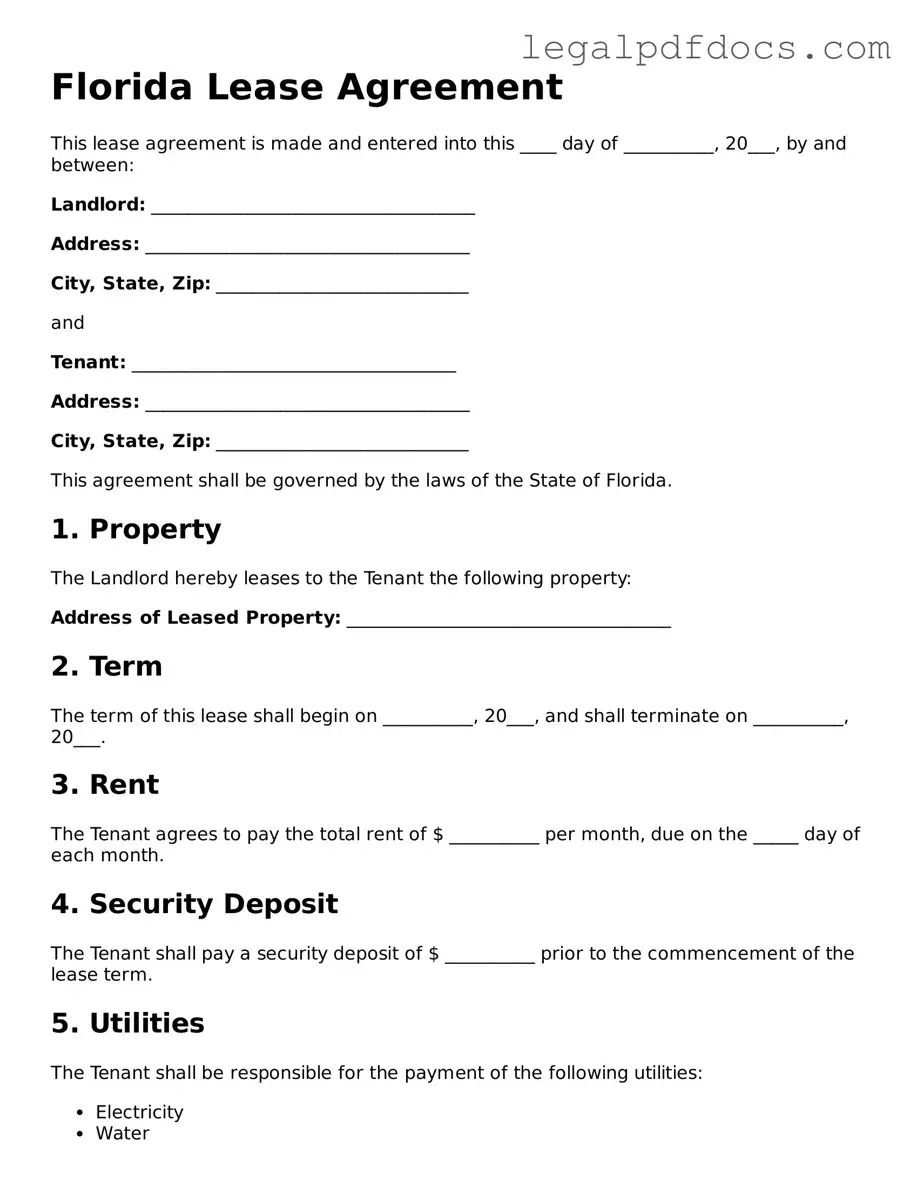Official Lease Agreement Form for Florida
A Florida Lease Agreement is a legally binding contract between a landlord and a tenant that outlines the terms of renting a residential property in Florida. This document details essential aspects such as rent amount, duration of the lease, and responsibilities of both parties. Understanding and completing this form accurately is crucial for ensuring a smooth rental experience.
Ready to secure your rental agreement? Fill out the form by clicking the button below.
Open Lease Agreement Editor Here
